About the Login Sequence Diagram Template
Understanding the user authentication process is crucial for any team optimizing their authentication protocols. That's where the login sequence diagram template comes into play. Sequence diagrams present a clear and dynamic view of how systems and users interact during the login sequence, making it an invaluable resource for planning and troubleshooting authentication protocols.
The login sequence diagram template defines each component involved in the login process, including the user, the user interface, and backend services. It aims to guide the representation of interactions that occur over time during the login process, allowing users to easily trace how and when these components interact, from the initial login request to the final authentication outcome. This framework streamlines capturing these exchanges, making it easier to adapt to specific login sequence nuances and optimize their authentication process.
How to use the login sequence diagram template in Miro
Using the template is a straightforward process:
Customize the components: Click on each element to edit text, allowing the naming of actions and actors to reflect your specific login process. If you want to create the login sequence diagram directly from code, access the PlantUML app.
Incorporate additional artifacts: Drag and drop any related artifacts onto the board to provide context. Whether it's additional notes, images, or documents, these can be easily integrated within the vicinity of your sequence diagram for comprehensive understanding.
Why should you use a login sequence diagram template?
The use of a login process template offers several benefits to a team during software development:
Clear communication: A login process template provides teams with a clear visual representation of complex processes, making communication easier.
Early error identification: Using a template, potential errors in the login sequence can be easily identified and rectified early on in the development cycle.
Efficient collaboration: Team members can collaborate in real-time using the template, reducing misunderstandings and accelerating consensus.
Scalability: The template can be effortlessly extended to accommodate additional scenarios or more detailed sequences as projects expand.
Integration with documentation: The login process template can be incorporated into technical documentation, ensuring consistency across project artifacts and serving as an excellent reference point.
Miro also has a sequence diagram template that you can use for other types of sequence diagrams. If you'd prefer to create one from scratch, Miro's diagramming capabilities and UML shape packs make it the perfect sequence diagram tool no matter your needs.
Login Sequence Diagram Template FAQs
Can the login sequence diagram template handle multiple authentication scenarios?
Absolutely. The template is designed to be versatile and can be customized to represent a variety of authentication mechanisms, including multi-factor authentication.
Is technical expertise required to change the template?
No, the template is user-friendly, and modifications can be made with just a few clicks. It is intuitive enough for people across different expertise levels to use effectively.
How does the template facilitate better understanding among non-technical stakeholders?
By visualizing the login process, the template makes the sequence and its components easily understandable, allowing non-technical stakeholders to grasp complex interactions without needing to understand the underlying code.
Are the changes made to the template in real-time?
Yes, any alterations or additions to the template are updated in real time, allowing for immediate feedback and collaborative editing.

Miro
Your virtual workspace for innovation
Miro is an innovation workspace designed for teams of every size, everywhere, to dream, design, and build the future together. Our mission? To empower these teams to create the next big thing, powered by AI at every step of the way. Over 90 million users around the world rely on Miro to untangle complex ideas, put customer needs first, and deliver products and services faster. All supported by best-in-class security, compliance, and scalability.
Categories
Similar templates
UML Diagram Template
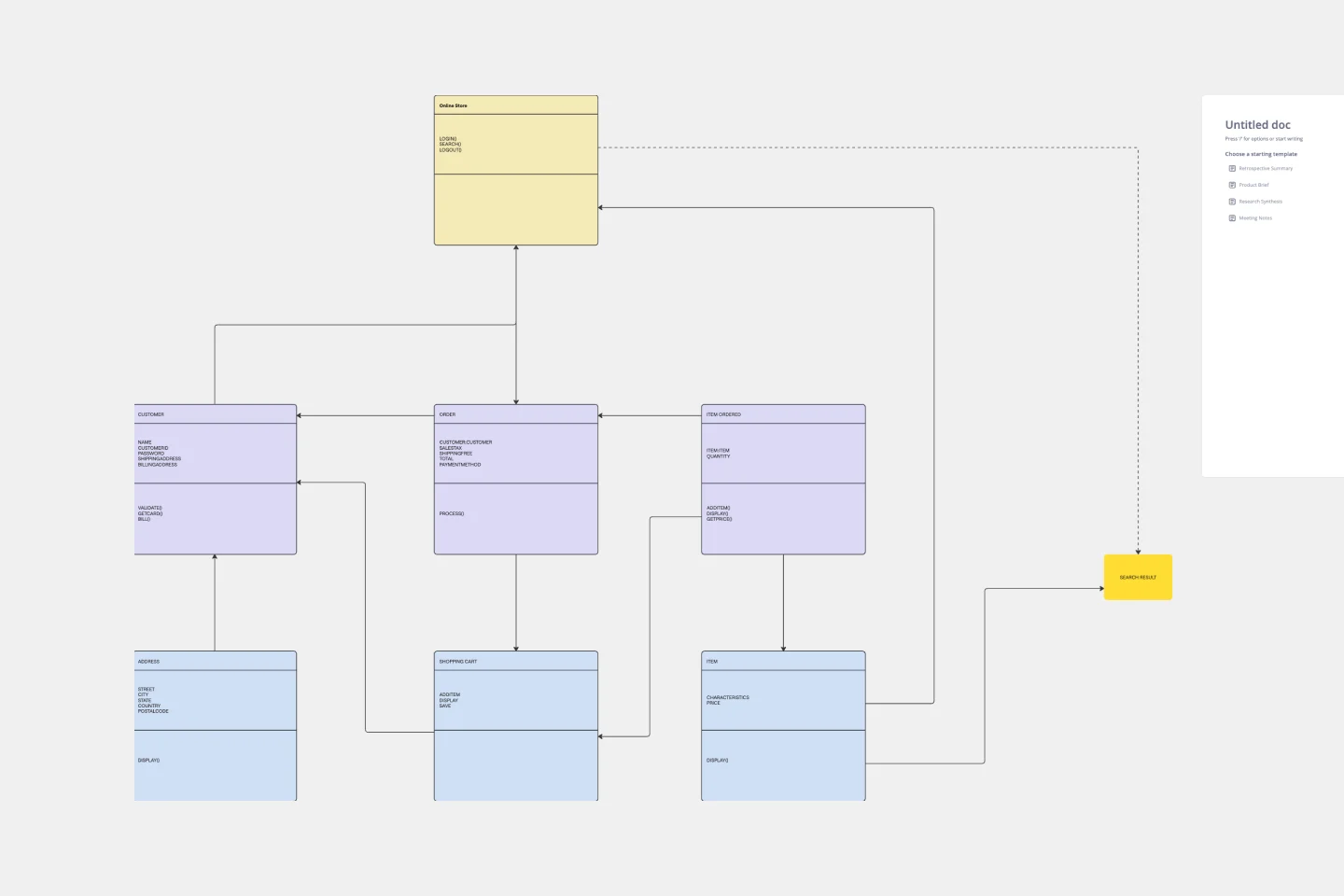
UML Diagram Template
Originally used as a modeling language in software engineering, UML has become a popular approach to application structures and documenting software. UML stands for Unified Modeling Language, and you can use it to model business processes and workflows. Like flowcharts, UML diagrams can provide your organization with a standardized method of mapping out step-by-step processes. They allow your team to easily view the relationships between systems and tasks. UML diagrams are an effective tool that can help you bring new employees up to speed, create documentation, organize your workplace and team, and streamline your projects.
UML Activity Diagram Template
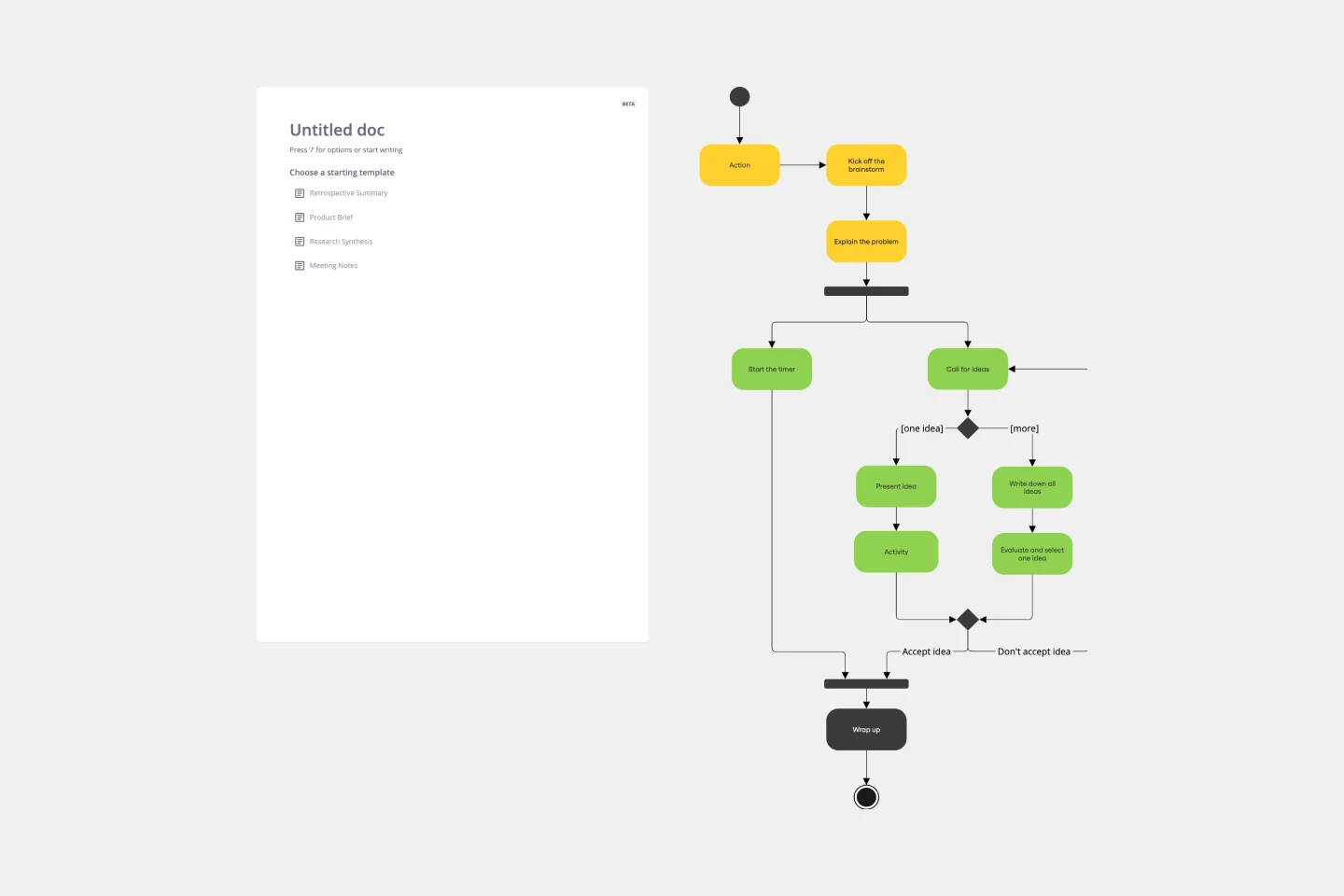
UML Activity Diagram Template
Use our Activity Diagram template to break down activities into smaller decisions and subprocesses. Improve and optimize systems and processes in I.T., business management, and more.
UML Component Diagram Template
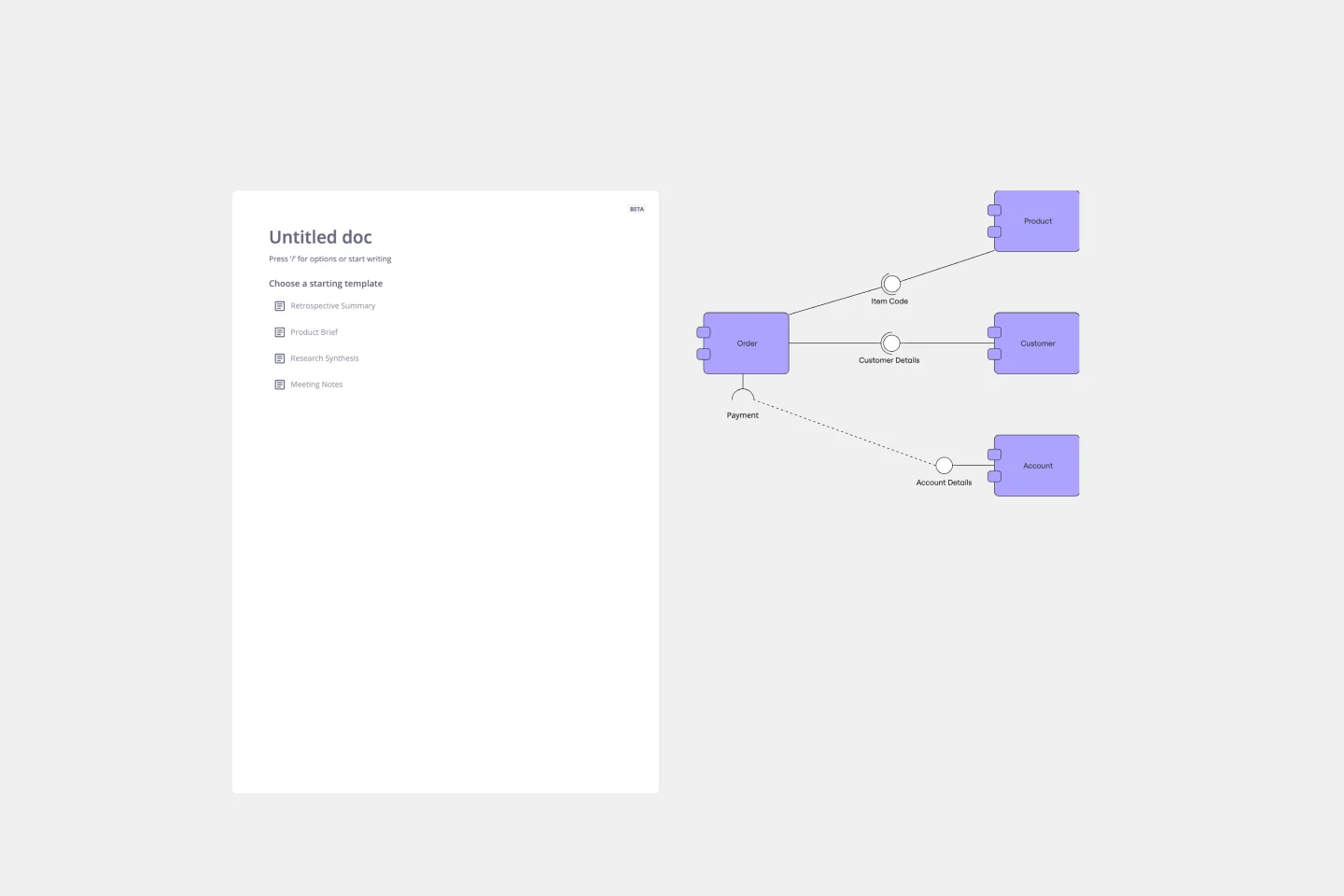
UML Component Diagram Template
Use our Component Diagram template to show how a system’s physical components are organized and wired together. Visualize implementation details, make sure planned development matches system needs, and more — all in a collaborative environment.
UML Communication Diagram Template
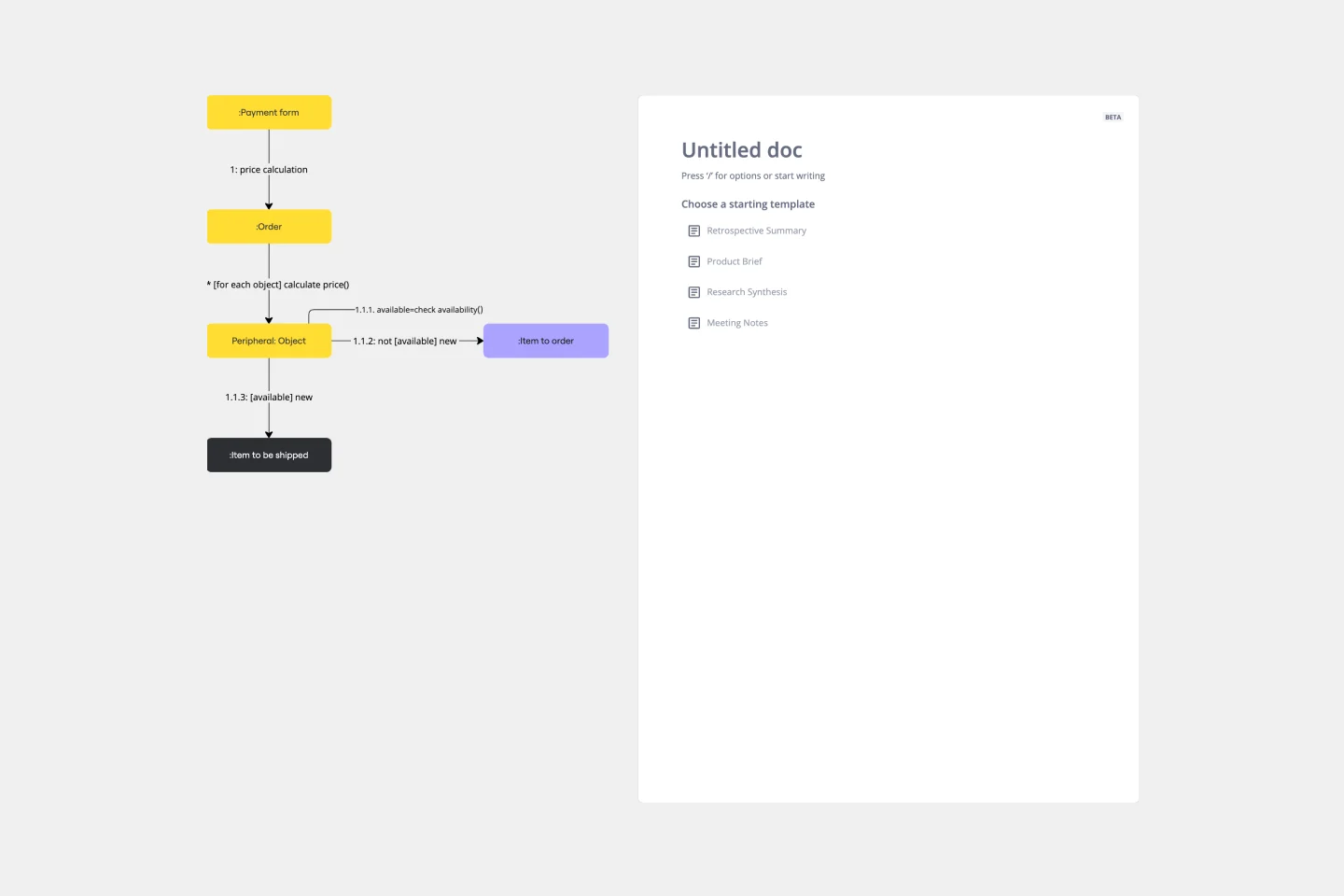
UML Communication Diagram Template
Most modern programs consist of many moving parts working to a precise set of instructions. With a communication diagram, you can visualize exactly how those parts work together, giving you a clearer understanding of your program as a whole. What’s more, the diagram leaves spaces for expanding the network of relationships as your product grows and evolves. A communication diagram is a vital tool in any software designer’s arsenal.
UML State Machine Diagram Template

UML State Machine Diagram Template
Visualize the workflow of a process and how objects perform actions based on different stimuli. State machine diagrams are valuable for understanding how an object responds to events at the different stages of its life cycle. They are also helpful for visualizing event sequences in a system.
UML Sequence Diagram Template
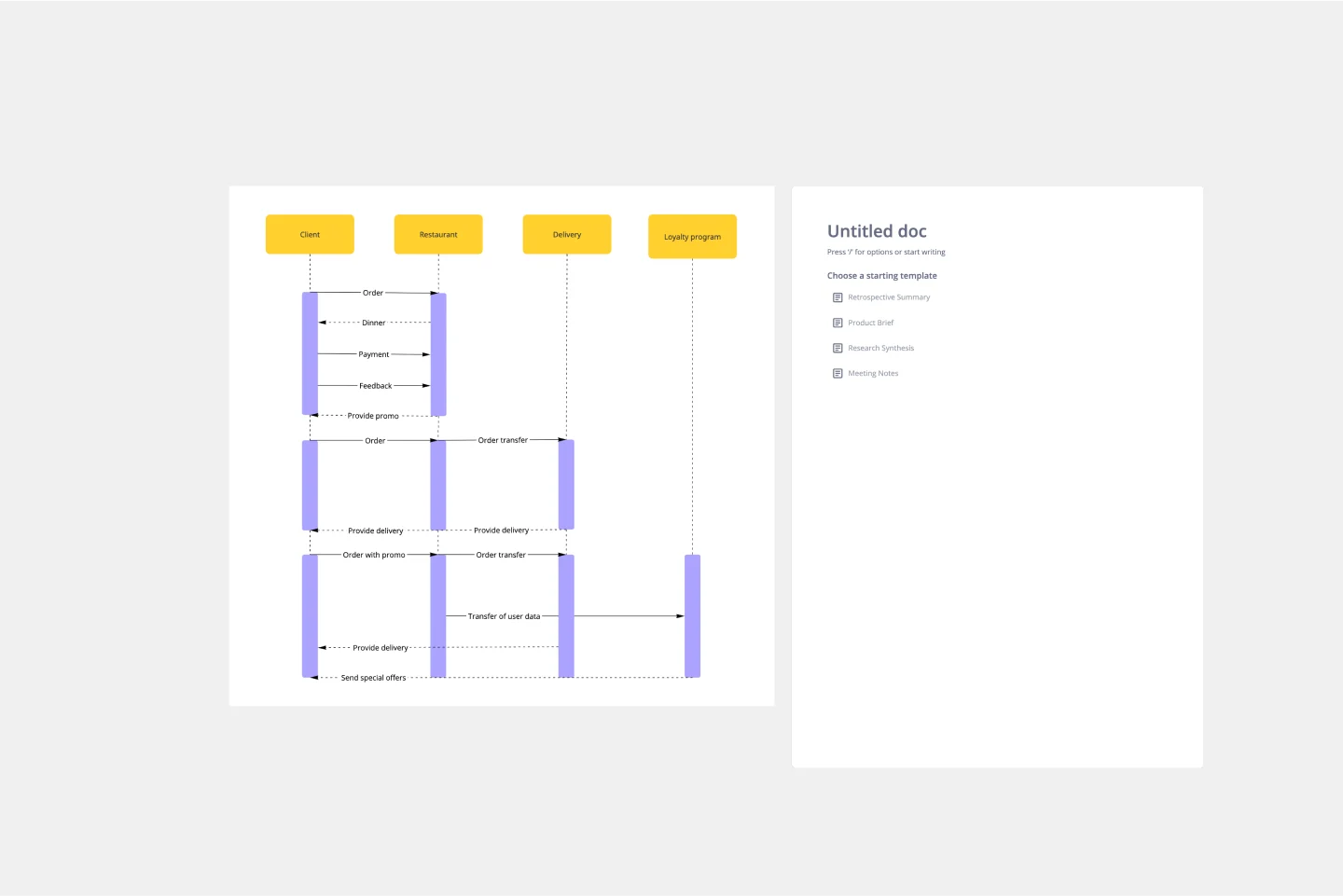
UML Sequence Diagram Template
Analyze and showcase how external entities interact with your system using a sequence diagram. Get a bird’s-eye view of your work processes, business functions, and customer interactions using this diagram. Also, identify any potential problems early and solve them before implementation.
UML Class Diagram Template
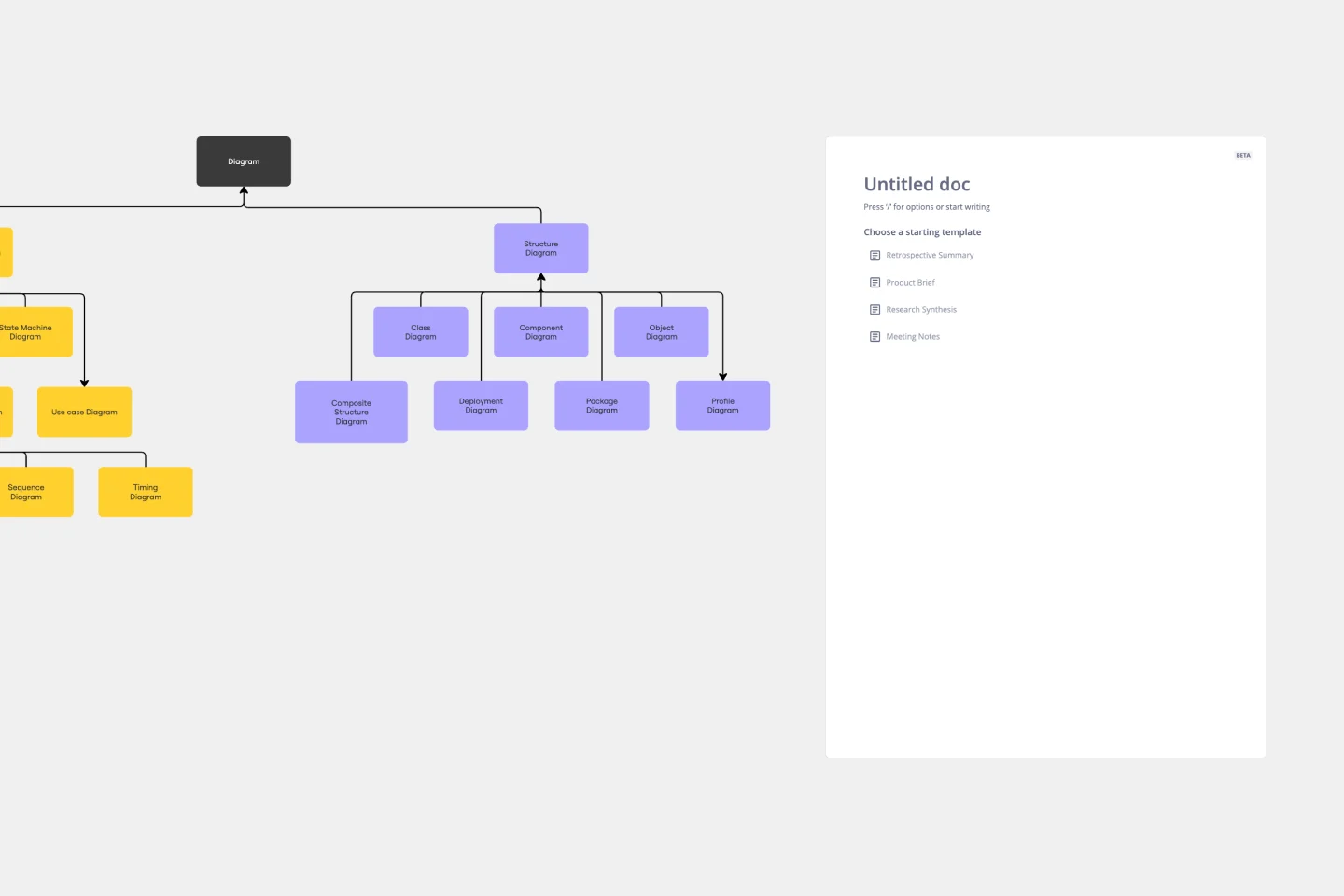
UML Class Diagram Template
Get a template for quickly building UML class diagrams in a collaborative environment. Use the UML class diagram template to design and refine conceptual systems, then let the same diagram guide your engineers as they write the code.
UML Diagram Template

UML Diagram Template
Originally used as a modeling language in software engineering, UML has become a popular approach to application structures and documenting software. UML stands for Unified Modeling Language, and you can use it to model business processes and workflows. Like flowcharts, UML diagrams can provide your organization with a standardized method of mapping out step-by-step processes. They allow your team to easily view the relationships between systems and tasks. UML diagrams are an effective tool that can help you bring new employees up to speed, create documentation, organize your workplace and team, and streamline your projects.
UML Activity Diagram Template

UML Activity Diagram Template
Use our Activity Diagram template to break down activities into smaller decisions and subprocesses. Improve and optimize systems and processes in I.T., business management, and more.
UML Component Diagram Template

UML Component Diagram Template
Use our Component Diagram template to show how a system’s physical components are organized and wired together. Visualize implementation details, make sure planned development matches system needs, and more — all in a collaborative environment.
UML Communication Diagram Template

UML Communication Diagram Template
Most modern programs consist of many moving parts working to a precise set of instructions. With a communication diagram, you can visualize exactly how those parts work together, giving you a clearer understanding of your program as a whole. What’s more, the diagram leaves spaces for expanding the network of relationships as your product grows and evolves. A communication diagram is a vital tool in any software designer’s arsenal.
UML State Machine Diagram Template

UML State Machine Diagram Template
Visualize the workflow of a process and how objects perform actions based on different stimuli. State machine diagrams are valuable for understanding how an object responds to events at the different stages of its life cycle. They are also helpful for visualizing event sequences in a system.
UML Sequence Diagram Template

UML Sequence Diagram Template
Analyze and showcase how external entities interact with your system using a sequence diagram. Get a bird’s-eye view of your work processes, business functions, and customer interactions using this diagram. Also, identify any potential problems early and solve them before implementation.
UML Class Diagram Template

UML Class Diagram Template
Get a template for quickly building UML class diagrams in a collaborative environment. Use the UML class diagram template to design and refine conceptual systems, then let the same diagram guide your engineers as they write the code.